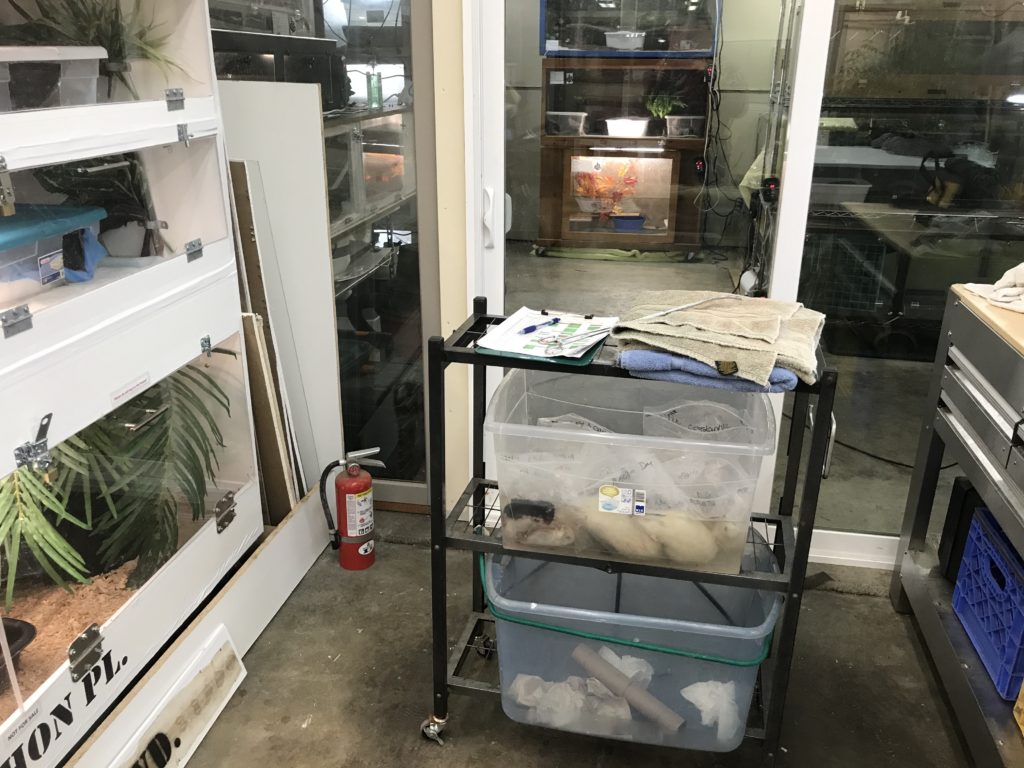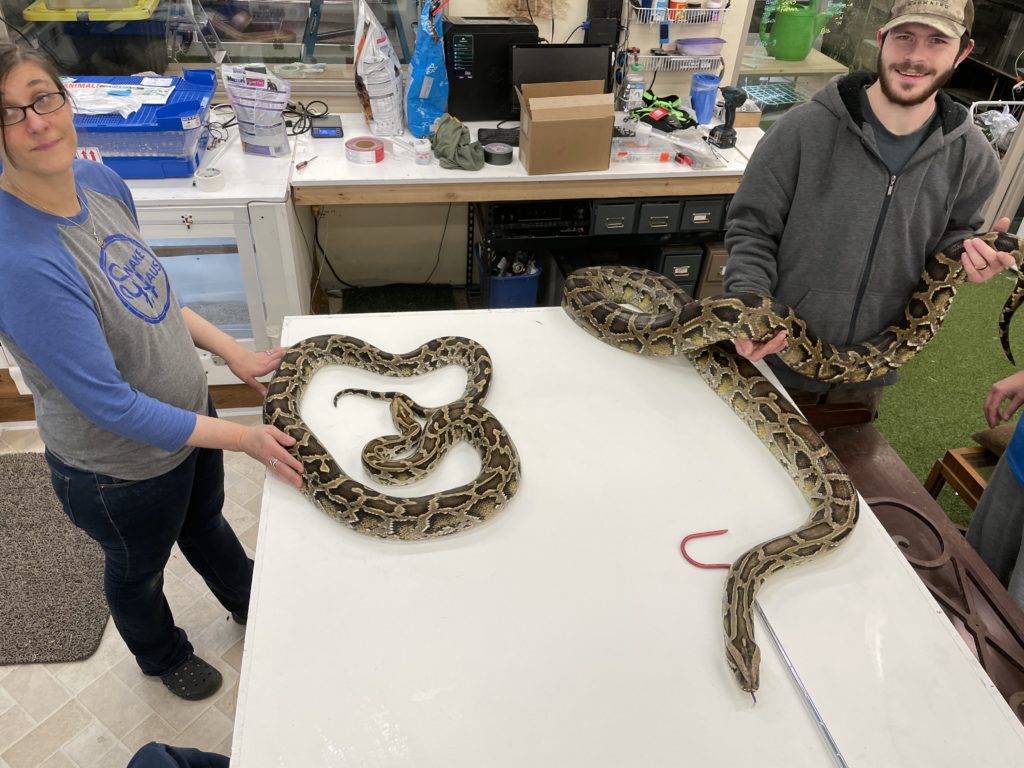There are many differing opinions about how to feed snakes in captivity. At Snake Haus we avoid feeding live food at all costs. We have many many animals with scars from bite wounds due to live prey. In most cases live food is not needed. Watch many of our feeding videos here to see how we feed our snakes.

Above is the Snake Haus West food cart. We have a garbage on the lower level, the hot water container in the middle where the food is warming, and a table top where the feeding charts and tools are. This makes feeding 70 some odd large constrictors much faster and efficient.
We feed almost all of our animals in their enclosures for a couple of reasons:
1. This is less stressful for them because we don’t have to handle them on feeding day.
2. This is safer with the really large snakes.
Honestly you don’t want a 9 foot boa or a 15′ foot retic thinking about food when out in the open. Feeding in the enclosure ensures they are
locked up, and safely confined, when in feeding mode. This also means they will not really ever think to look for food outside of their enclosure. Can you imagine Marion (pictured here) in feeding mode out in the open?! Yikes!
Snakes have been given a unique skeleton to allow for an ability to eat food much larger than their mouth when closed. The joints of the jaw and skull are ligamentous rather than bony. This mean they can dislocate their jaw in several place to allow it to stretch. Nature’s purpose in giving them this ability is so they can eat a large meal quickly and then go back into hiding to digest in safety. During the process of swallowing a meal a snake is incredibly vulnerable so the faster they can get their food down the safer they are.
The way we feed these snakes really does matter. Here we see Ludo and Larry next to each other. Although Ludo is 2 years older than Larry he is 1/3 of the size. He has suffered significant illness and has had many years of poor appetite. Larry on the other hand eats like a champ.

Remember there is a good middle ground – please don’t power feed but you do need to offer enough food for adequate growth. Feeding less to purposely keep your snake small is not recommended. Over feeding to grow a giant quickly is just as bad.
This video shows Fable hunting.
We drop feed which means we place the frozen/thawed & reheated food item into the enclosure and leave it for the snakes to find on their own. This is a form of enrichment because it means they have to look for it.
Fable usually finds her food quickly but this time she was up on her shelf and a little distracted. You can see that she smells it right away but since it’s not moving it takes her a little bit of work to find it. Good job Fable!
(For size reference this enclosure is 7.5’long x 2’d x 2’h)
This one shows us using Legend’s food door. Most of our big retics have a small door that we feed them through. Everything else happens through the big door. This helps calm down the high food drive in retics and helps them understand when to be looking for food vs when to be social. Legend is a very shy eater though so he usually waits to eat until we turn off the lights and leave. You can see in this video though that he definitely knows what the food door means.
This is Ella the ball python who was surrendered here for not eating. This video shows her coiled around her meal preparing to eat. Owners claimed they tried everything & couldn’t get her to eat. Well good news is she hasn’t missed a single meal since coming here. All we did is put her in this tub rack and like magic she’s slamming weaned rats.
The learning point here is to admit and really understand that most ball pythons that refuse to eat do so either due to incorrect temperatures or due to fear.
Once Ella puts on some good weight and starts growing again we will move her to a Viv and start handling her. That will not happen for several months though.
Always remember the welfare of the animal should take precedence over our or your or whomevers opinions of enclosure type and husbandry. It doesn’t matter if you think the enclosure is ugly or pretty, right or wrong, if the snake doesn’t like it the snake is right. If the snake’s behavior is off it’s very likely the husbandry is the cause and needs to be changed.
So listen to your snakes guys! If they aren’t eating, are too active, staying out in the open, always want out, etc then you need to make some changes. I often tell people – a hiding snake is a happy snake!

